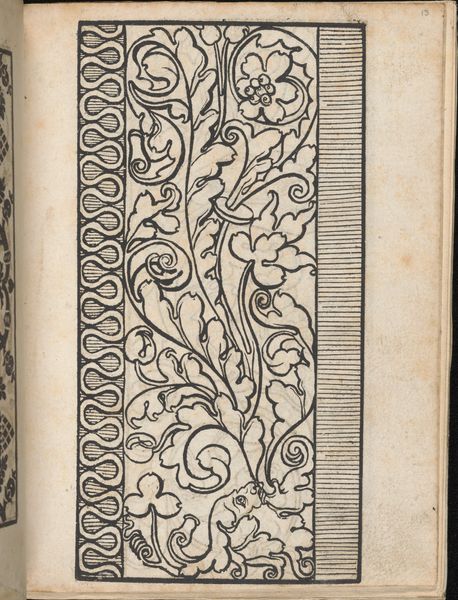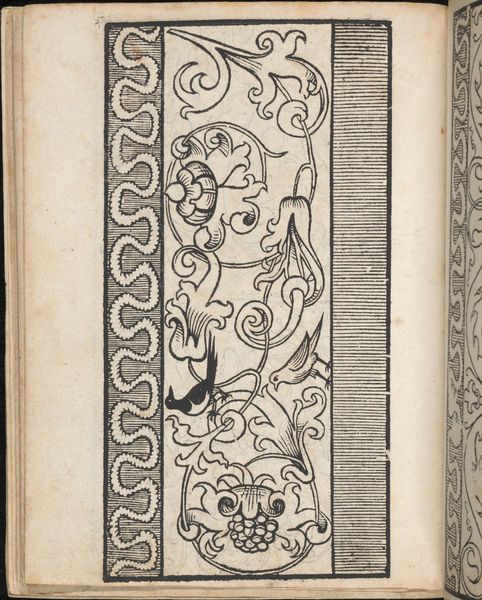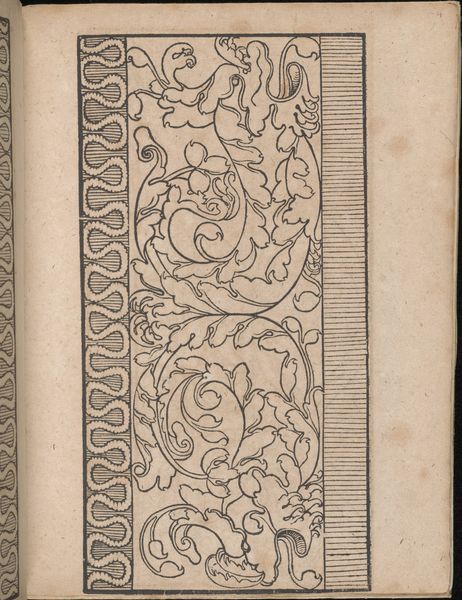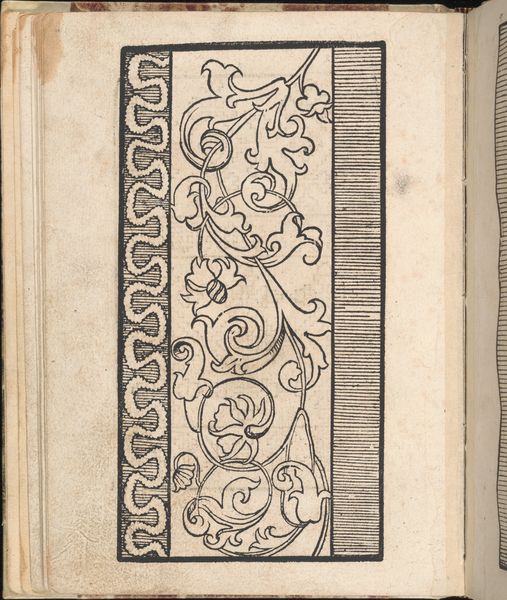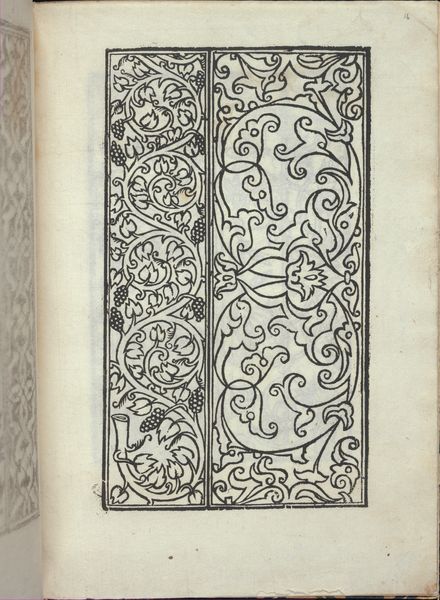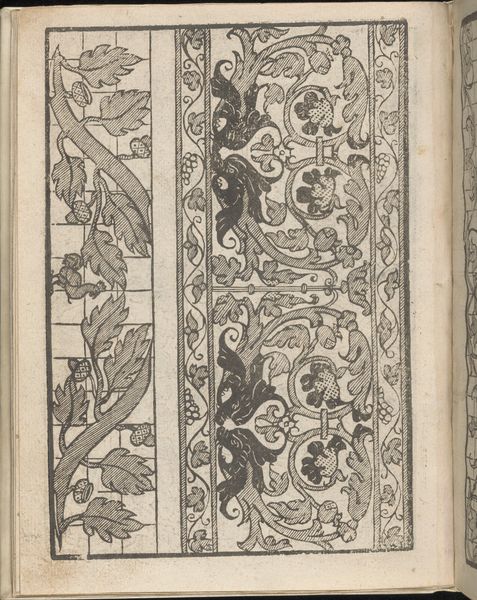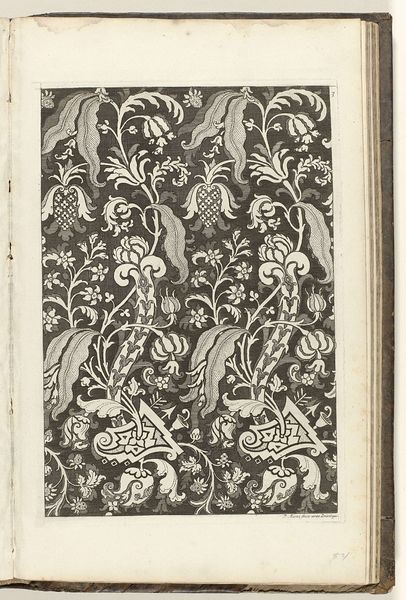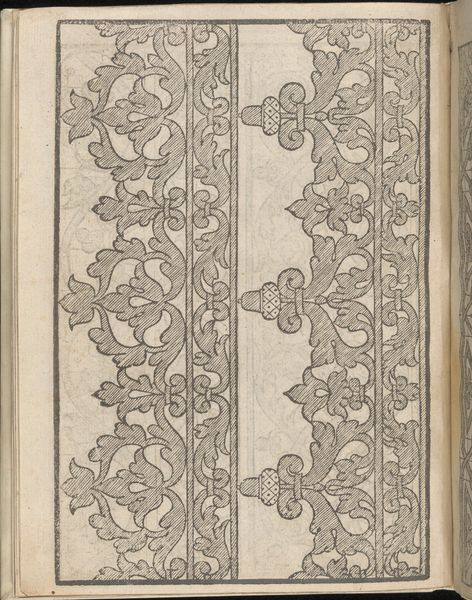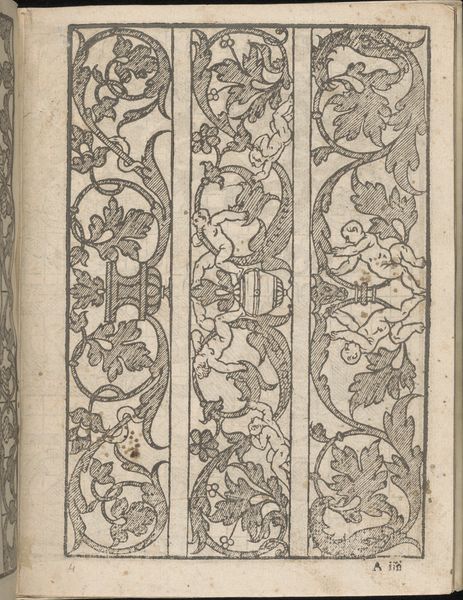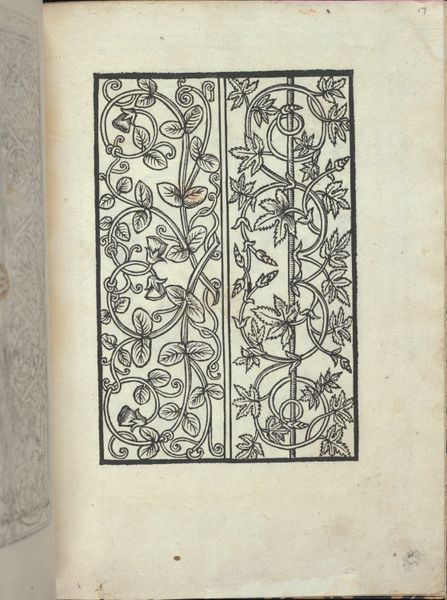
Ein new Modelbuch..., page 13 (verso) 1524
0:00
0:00
drawing, ornament, print, woodcut
#
drawing
#
ornament
# print
#
book
#
geometric
#
woodcut
#
line
#
northern-renaissance
Dimensions: 7 5/16 x 5 3/8 in. (18.5 x 13.6 cm)
Copyright: Public Domain
Curator: Looking at this page from Johann Schönsperger the Younger’s "Ein new Modelbuch…," printed in 1524, I'm struck by the density of ornamentation and the implied purpose. Editor: Immediately, I find it quite serene, almost meditative. The delicate, swirling forms evoke a sense of contained energy. Curator: As a page from a pattern book, intended for embroidery or other crafts, this woodcut print highlights the function of art within a domestic sphere. The printing press democratized access to design at the time, a significant socio-cultural shift. Editor: Precisely! Think of who had access to pattern-making before: guilds, elites… But this offers a blueprint, democratizing design for broader audiences, especially women in the domestic realm, who now have visual resources, enabling their own creations. Were these pages only for design or did they signify education, status? Curator: Potentially both. Manuals and model books were didactic tools, especially useful in workshops and domestic settings, enabling transmission of designs and techniques. Consider the role of geometric principles that ground the organic leaf patterns, suggesting the application of mathematical proportions in artistry. Editor: True. These intricate patterns go beyond mere aesthetics; they empower women economically and creatively, countering patriarchal narratives of the time that often relegated women's artistic contributions. Were women recognized for implementing or creating such designs, or were they simply anonymous artisans? Curator: That’s difficult to determine with certainty. Attribution to specific female makers is often absent in historical records, a silencing act of structural sexism within the art world itself. Recognizing such erasures requires continual commitment from cultural institutions. Editor: Absolutely. This printed page offers a glimpse of a complicated moment in art history. Thanks for walking me through some of those themes. Curator: The pleasure was mine. Reflecting on the cultural context can reveal previously unheard stories, enriching our experience and understanding of art in general.
Comments
No comments
Be the first to comment and join the conversation on the ultimate creative platform.
